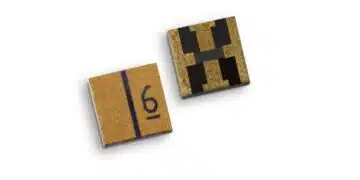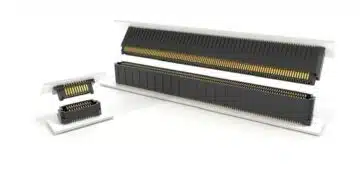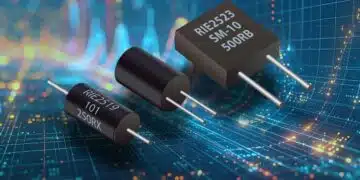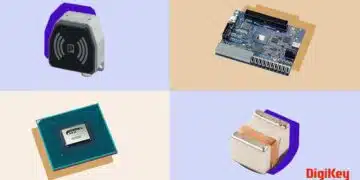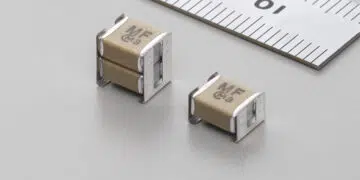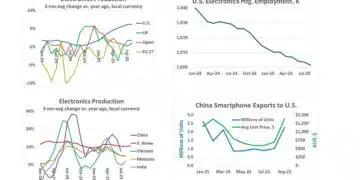Power supply switching ripple and control loop phase margin are dominated by the output inductor and the bulk capacitors.
Simple RLC capacitor and inductor models can result in a design with more capacitors than necessary adding to the design cost, consuming valuable circuit board real estate and degrading the control loop performance.
Key Takeaways
- Accurate modeling of capacitors and inductors is crucial for power integrity in electronic systems.
- The 2-port shunt-through measurement technique offers over 100 dB dynamic range, providing precise impedance data for reliable modeling.
- Engineers can reduce unnecessary components and PCB space by utilizing optimized broadband SPICE models.
- Calibrating the measurement system minimizes errors and improves simulation accuracy, especially at high frequencies.
- Advanced modeling techniques enhance control loop stability and overall design efficiency.
Most capacitor datasheets provide very limited information, such as maximum ESR at 100kHz and not the desired information regarding typical values and frequency dependancies of the C, ESR, and ESL.
This presentation will show how to make these measurements efficiently and how to use the results directly or create high fidelity measurement based models for simulation in ADS.
Introduction
Accurate modeling of capacitors and inductors is essential for achieving robust power integrity in modern electronic systems. Traditional RLC models often oversimplify component behavior, leading to overdesign, excessive capacitor counts, and degraded control loop performance. By leveraging advanced measurement techniques—particularly the 2-port shunt-through method—engineers can extract high-fidelity data suitable for both SPICE and EM simulations. This presentation outlines the methodology, measurement process, and optimization strategies for creating broadband models that balance accuracy, cost, and PCB efficiency.
Measurement Fundamentals
The cornerstone of accurate modeling is precise impedance measurement. The 2-port shunt-through method is preferred over 1-port reflection due to its superior dynamic range and ability to measure impedances below 1 mΩ. A coaxial transformer is required for low-frequency, low-impedance measurements to maintain fidelity.
| Method | Dynamic Range | Lowest Measurable Impedance | Use Case |
|---|---|---|---|
| 1-Port Reflection | ~66 dB | ~200 mΩ | General RF components |
| 2-Port Shunt-Through | >100 dB | < 1 mΩ | Power inductors, bulk capacitors |
Calibration and Setup
Calibration is critical for eliminating systematic errors. For frequencies below 50 MHz, a THRU calibration between ports is sufficient. At higher frequencies, a full SOLT (Short, Open, Load, Thru) calibration is required. Components are mounted either in a fixture or directly on a PCB, with careful attention to minimizing lead length and parasitic effects.
Modeling Capacitors
Ceramic capacitors can be modeled accurately using two parallel RLC branches. Anchor points are extracted from measurements: low-frequency capacitance, high-frequency inductance, series resonant frequency, and ESR. Bulk capacitors, especially non-polymer types, exhibit frequency-dependent resistance and capacitance, requiring more sophisticated models. Optimizers are employed to minimize the error between measured and simulated impedance.
Modeling Inductors and Ferrite Beads
Inductors and ferrite beads often exceed the 225 Ω measurement limit at high frequencies. To extend the measurable range, series resistors are added at the VNA ports, effectively scaling the measurement window. This allows accurate characterization from milliohms up to several kilo-ohms. Parasitics introduced by the series resistors are minimized by integrating them directly onto the DUT mounting board.
| Series Resistor Value | Minimum Measurable Impedance | Maximum Measurable Impedance |
|---|---|---|
| 0 Ω (baseline) | 1 mΩ | 225 Ω |
| 100 Ω | 0.5 mΩ | 600 Ω |
| 499 Ω | 11 mΩ | 2.5 kΩ |
Optimizer Workflow
The optimizer process begins with manual tuning of six shaping parameters to achieve a reasonable fit. Once initialized, the optimizer iteratively minimizes the error function defined as the difference between measured and simulated impedance. The result is a broadband SPICE model that overlays nearly perfectly with the measured data, ensuring simulation accuracy for both time-domain and frequency-domain analyses.
Conclusion
Accurate capacitor and inductor models are essential for power integrity design. By employing the 2-port shunt-through measurement method, separating mount parasitics, and leveraging optimizers, engineers can reduce component count, save PCB space, and improve control loop stability. These techniques enable the creation of high-fidelity SPICE and EM models that closely match real-world behavior, ensuring cost-effective and reliable designs.
Frequently Asked Questions: Measuring, Modeling, and Simulating Capacitors and Inductors
Accurate models ensure robust power integrity, reduce unnecessary component counts, save PCB space, and improve control loop stability. Oversimplified RLC models often lead to overdesign and degraded performance.
The 2-port shunt-through VNA method is preferred, offering over 100 dB dynamic range and sub-milliohm resolution, making it ideal for bulk capacitors and power inductors.
Mount parasitics must be separated from intrinsic component behavior. Without this step, EM simulations can misrepresent real-world performance, leading to design inefficiencies.
Optimizers refine broadband SPICE models by minimizing the error between measured and simulated impedance, ensuring near-perfect alignment with real-world data.
They reduce component count, lower costs, save PCB real estate, and improve control loop phase margin, resulting in more efficient and reliable designs.
How to Measure and Model Capacitors and Inductors
- Prepare Measurement Setup
Use a Vector Network Analyzer (VNA) with the 2-port shunt-through method. For low-frequency, low-impedance measurements, include a coaxial transformer.
- Calibrate the System
Perform THRU calibration for frequencies below 50 MHz. For higher frequencies, use a full SOLT (Short, Open, Load, Thru) calibration to eliminate systematic errors.
- Mount Components Carefully
Place components in a fixture or directly on a PCB, minimizing lead length and parasitic effects to ensure accurate data capture.
- Extract Key Parameters
Identify low-frequency capacitance, high-frequency inductance, ESR, and series resonant frequency. For bulk capacitors, account for frequency-dependent resistance and capacitance.
- Apply Optimizer Workflow
Manually tune shaping parameters, then use an optimizer to minimize error between measured and simulated impedance, creating a broadband SPICE model.
- Validate and Simulate
Overlay the SPICE model with measured data to confirm accuracy. Use the model in both time-domain and frequency-domain simulations for reliable design validation.


